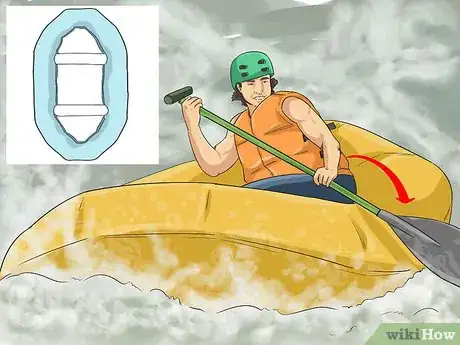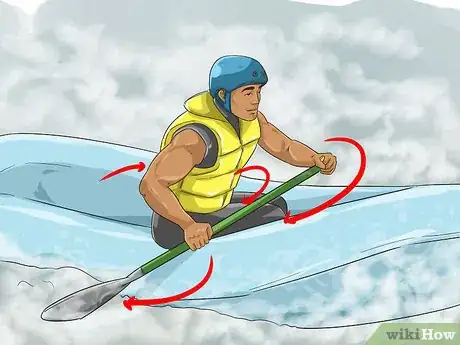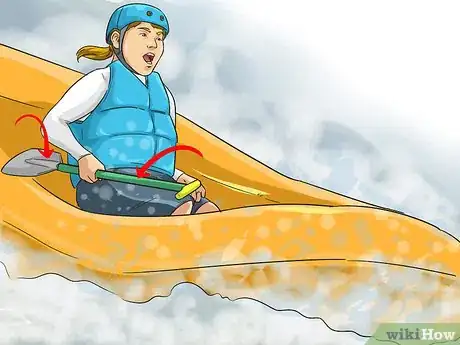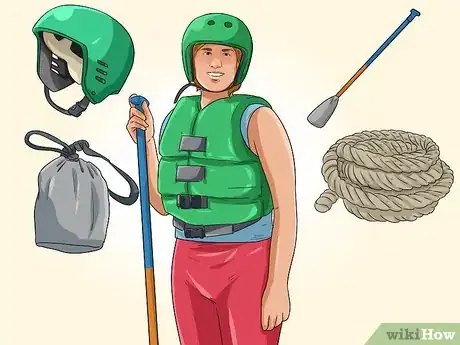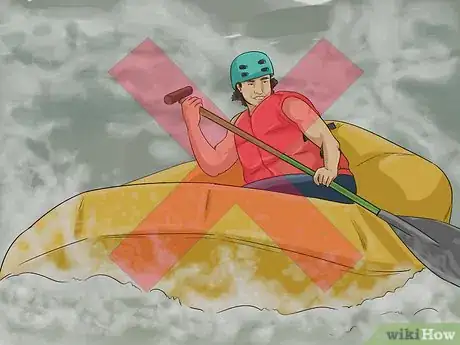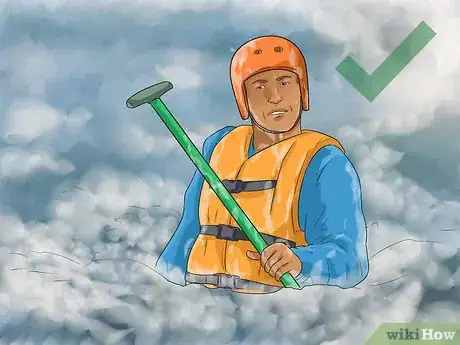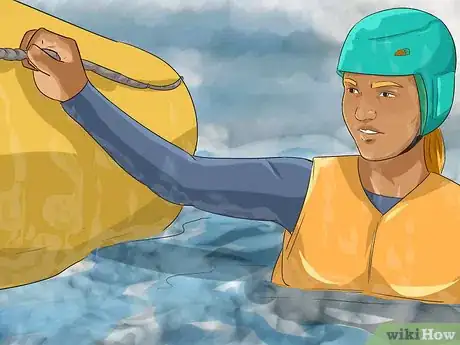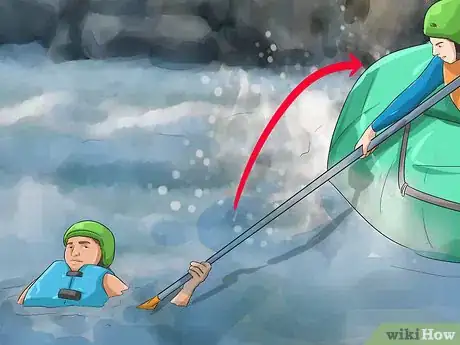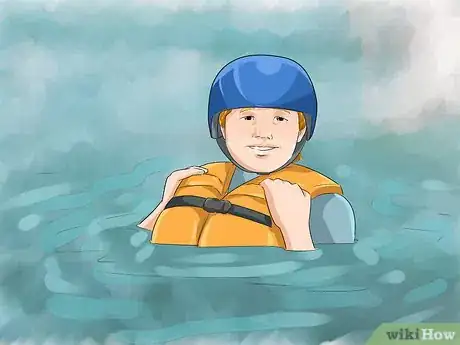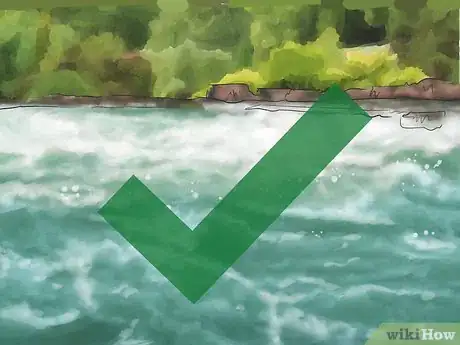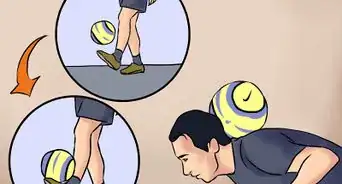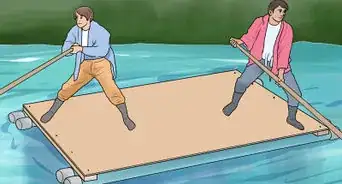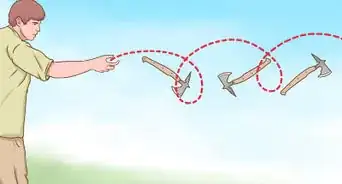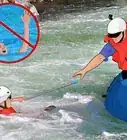This article was co-authored by wikiHow Staff. Our trained team of editors and researchers validate articles for accuracy and comprehensiveness. wikiHow's Content Management Team carefully monitors the work from our editorial staff to ensure that each article is backed by trusted research and meets our high quality standards.
There are 8 references cited in this article, which can be found at the bottom of the page.
This article has been viewed 41,776 times.
Learn more...
If you're looking for a heart-pounding activity that involves rivers and nature, white water rafting may be the perfect hobby for you. White water rafting is the act of using an inflatable raft to navigate down rough waters and is a great group activity for older teens and adults. While white water rafting can initially be intimidating, it's actually relatively safe at lower difficulty levels. If you equip yourself with rafting knowledge, listen to your guide, and plan your trip carefully, you can safely enjoy this outdoor activity.
Steps
Riding in Your Raft
-
1Sit on the outer rim of the raft. While you may initially want to sit on the inside of the raft, this will actually increase your chances of getting thrown overboard. Instead, sit on the outside rim of the raft and use the cross tubes or foot cones to plant your feet inside of the raft. If your raft has foot cones, place your foot closest to the inside of the raft under it. If your raft has cross tubes, sometimes referred to as a thwart, you can place one foot under them to help stabilize you. Your other foot should be wedged under the outside tube for stability.[1]
- Sitting in the middle position will minimize your chances of getting thrown overboard.
- Do not push your feet too deeply into the cross tubes or foot comes, or they may become caught if your raft flips over.
- Those sitting in the front will get to see the most downriver but must also have skills to steer the raft for the rest of the group.
-
2Use the correct hand position when holding your paddle. An improper grip on the paddle while your raft goes downstream could be a safety hazard for others around you. One hand should be placed firmly on the shaft of the paddle while your other hand should be at the end, covering the "T" grip.
- The "T" grip can cause injuries to the face and body of other rowers if it flys out of your hand.
- Practice alternating with both hands to see what feels most comfortable for you.
Advertisement -
3Learn how to use the paddle. Using only your arms will tire you out quickly. Instead of using your arms alone, lean into the stroke as you paddle and use your body weight to lean back. Synchronizing your paddling with others will give you more control over your raft. You should also lean into the stroke when you perform a backstroke. To perform a backstroke, lean forwards and pull your paddle backward as you use your leg to anchor you.
- Paddle hard while you go down the rapids to help stabilize you in the raft.
- Those in the raft should try to synchronize their paddles with the people in the front.[2]
- The paddle in the water creates a resistance that makes another bracing point for you, which is the reason why increases your stability.[3]
-
4Pull your paddle into the raft and brace yourself when going over a bump. Often an instructor or experienced white water rafter will yell "bump" if your raft is about to go over a hard object such as a rock. In this case, you should pull your paddle out of the water and lean in towards the center of the raft.[4]
- Place the "T" grip on your paddle on the ground and maintain your grip on it as you go over the rough spot.
Keeping Safe While Rafting
-
1Get the proper safety equipment. Essential equipment for riding the rapids include a helmet, personal flotation device, the correct sized paddles, a throw bag or rope, and a first aid kit. Getting these essential items can keep you safe on your adventure and are required by most guides and instructors.
-
2Follow the instructions given by your raft guide. If you are new to white water rafting, you'll likely have an instructor that can give you the preliminary information to stay safe. More importantly, they will likely set the pace and yell out instructions as your raft goes down the rapids. Follow the instructions exactly as the raft instructor lays out and try to stay calm if it gets bumpy.[5]
- The instructor will often point into the direction where they want the raft to go. This is called "positive pointing."[6]
-
3Do not raft alone or in the dark. Rafting alone or in the dark can be incredibly dangerous and should always be avoided. If you are new to white water rafting, experienced rafters will be able to help you and answer questions as you go. White water rafting in the dark is incredibly dangerous because you can't see where someone is if they get thrown overboard, and you also can't see potential obstructions like rocks in the distance.[7]
Acting When You're Thrown Overboard
-
1Do not panic. The initial bodily reaction to being dunked under cold water in a high-stress situation like being thrown overboard from your raft is shock and panic. This disrupts your breathing pattern and clouds your judgment which could make it harder to get back onto your raft.[8] Stay calm and aim to reach the surface of the water. Once you do that, you can better assess how to move forward and get yourself out of harm's way.
- Try to regulate your breathing and stay concentrated on the task at hand, which is getting back onto the boat, not the fact you've been thrown overboard.
-
2Make your way to the side of the raft. Once you reach the surface of the water and can breathe, take a second to gather yourself and determine where the raft is. Many times when you're thrown overboard, you'll end up right next to the raft. If you are further from the raft, then you can extend your paddle to the boat and try to get someone else to pull you closer to it.
- When extending your paddle, make sure you offer the "T" grip to the person pulling you in.
-
3Grab onto the outside safety line on the perimeter of the raft. Grab onto the line that's attached to the perimeter of the raft to give yourself stabilization. If you still have your paddle, hand it to someone inside of the raft so that you can grab onto the raft with both hands. Hang on the side of the raft until someone is ready to pull you in.
-
4Get pulled into the raft. Only one person should be performing a rescue if another person gets thrown overboard. If you are the rescuer, grab onto the shoulder straps of the person's personal flotation device, locking both of your arms and then falling back to pull in the individual who fell overboard.
- The guide should be the one pulling people out of the water.
-
5Assume the Whitewater swimming position if you're too far away. If you can't make your way back to the raft and it's impossible for someone to pull you back in, assume the Whitewater swimming position and ride the current until you can get to shore. The Whitewater swimming position is when your feet are pointed out in front of you over the water while you float down the river on your back. Your knees should be slightly bent so that you can absorb any shock from oncoming rocks or shallow areas of the river. [9]
- When you are going downstream in this position, try to take breaths when the water is low, not on the crest of the wave.
- Do not try to stand in the water because your feet and ankles can become stuck in rocks and cause serious injury.
- Abandon the Whitewater swimming position when you get safely to shore or can make your way back onto the raft.
Planning Your Rafting Trip
-
1Make sure that the difficulty of the rapids matches your skill level. There are six classes of rapid, and each class has a varying level of difficulty. Level one and two rapids are usually suitable for beginners, while the later levels require a guide or experienced rafter. Consider the age, experience, and physical fitness of those that are going rafting and select a difficulty level that can accommodate everyone who is going.
- Class two rapids can have three-foot tall waves with wide channels.
- Class three rapids have four-foot tall waves and narrower passages than class two rapids.
- Class four rapids have consistently turbulent waters, narrow passages, and requires precise maneuvering.
- Class five and six rapids are much more difficult and dangerous and should only be attempted by experienced white water rafters.[10]
-
2Search for reputable rafting instructors and companies. Before you plan your trip, find a reputable and well-rated company that offers white water rafting guides and equipment. Read past reviews of people who have used the company and find a company that has favorable reviews.
- If you are new and don't have a raft, many companies have ones that you can rent out for the day.
- In addition to the equipment, they will also go over safety procedures and will give you a guide to help you while you're on the rapids.
- White water rafting guides should have should have CPR and First Aid certification. Ask the company if these are necessary skills for their guides.
-
3Choose a trip that will fit your budget and schedule. Narrow down your selections for trips and choose one that you can afford. Search their website to see the seasons that they offer white water rafting. In addition, you'll want to make sure that it fits within your schedule. White water rafting can take three to six hours, so it's smart to allocate an entire day to it.[11]
- The average cost of a one-day guided white water rafting trip is $25-$115 per person.[12]
References
- ↑ https://georafting.com/geo-tours-whitewater-rafting/whitewater-rafting-safety/
- ↑ https://newrivergorgecvb.com/beginner-whitewater-raftingtips/
- ↑ https://newrivergorgecvb.com/beginner-whitewater-raftingtips/
- ↑ https://www.mad-river.com/blog/2015/08/19/paddler-s-guide-to-whitewater-rafting-lingo
- ↑ https://newrivergorgecvb.com/beginner-whitewater-raftingtips/
- ↑ https://www.mad-river.com/blog/2015/08/19/paddler-s-guide-to-whitewater-rafting-lingo
- ↑ http://www.americanwhitewater.com/whitewater-rafting-safety-tips-shoot-the-rapids
- ↑ http://www.ussartf.org/cold_water_survival.htm
- ↑ http://www.americanwhitewater.com/whitewater-rafting-safety-tips-shoot-the-rapids
